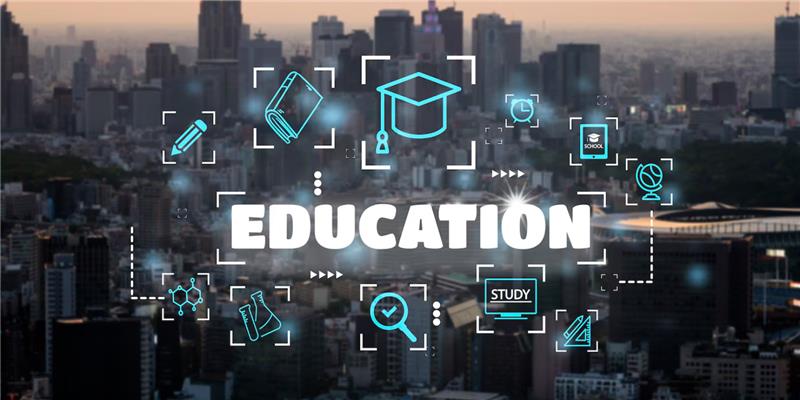Just relying on outdated methods to engage students in the changing world of learning is not enough. Educational institutions are integrating advanced tools that include data-driven platforms, CRM for educational institutes, And LMS. In addition to enriching the learning process, it paves the way for the smooth performance of organizational operations that further enhances communication between students and educators. In this blog post, we will discuss how the correct software for educational institutions can change the engagement of students and enable them to deliver better results.
The Shift towards Tech-Based Interaction
Technology in schools is no longer an option; it is a requirement for increasing learning engagement. Whether in the physical classroom or the virtual, the student learns better when learning environments are interactive, response-based with timely feedback, and engaging means of content delivery. CRM for higher educational institutions enables schools to manage the academic journey of each student with precision, hence enabling personalization throughout every step of enrollment - graduation.
Digital technology engages students through several methods:
Interactive presentation of material: Gamified quizzes, virtual simulations, and multimedia assignments engage learners with the learning process.
Collaborative spaces: Online collaborative projects and group project discussion boards can facilitate teamwork, even in a remote or hybrid classroom.
Personalized experiences: CRM allows institutions to track a student's academic performance. Resources can then be calibrated in real-time to help students feel supported and motivated in their study endeavors.
If they are perceived as valued and academically supported, students tend to stay engaged, improving learning outcomes and retention rates.
Role of CRM in Educational Institutions
CRM software for educational organizations stretches far beyond contact management. It is a whole hub where all the interactions are tracked, the student needs can be traced, and the relationship with such key stakeholders as alumni and donor communities is nurtured. Among the critical roles that CRM software handles are:
1. Enrollment Management
Automated workflows make the admission process smoother, with prompt follow-up actions with the candidate. This will enhance the applicant experience by removing bottlenecks, thus maximizing the enrollment rate. The admissions team can also track where it loses its students in the funnel and optimize outreach strategies with CRMs.
2. Ongoing Student Support
It tracks and monitors the students' history and behavior and alerts the advisor whenever a student shows signs of disengagement. Early intervention, which could include academic coaching, counseling, or access to learning resources, ensures the students seek help when it matters, not too late.
3. Alumni Engagement
The institutions can leverage their CRM platforms to manage alumni relationships for the long term. The customized campaigns continue to stimulate graduates to become involved in mentoring, attend events, or support fundraising. The alumni who participate in the process are mostly mentors who offer career guidance to the current students as well as networking opportunities.
All these functions of CRM make the software a very effective tool for educational institutions to optimize engagement at all stages of the student lifecycle.
Digital Collaboration for Better Learning
Cooperation among students is one of the most important aspects of learning. Sophisticated learning tools, such as the discussion board and virtual classroom, as well as collaborative workspaces, foster interaction and cooperation among students. This feature enables the student to work on a group assignment or brainstorm ideas and even try solving problems together-physically or virtually.
The faculty can track the students' participation levels by keeping up with their engagement levels on the CRM system. This way, all of the students in the class are ensured to be engaged. For example, if a student is not actively responding to some questions in the class, the teachers would be alerted and may provide support proactively. Continuous monitoring keeps raising the participation levels and keeps the students on the right track.
Advantages of Technology-Driven Engagement
Institutions that adopt higher education and other technology-based CRM software enjoy the following benefits in significant numbers:
Increased Efficiency: Automated processes reduce administrative workloads and free more staff time for teaching and student support.
Easy Communication: Students are kept informed in real-time by notifications regarding deadlines, events, and academic updates with that associated sense of community.
Data-Driven Insights: Analytics can help institutions develop insight into students' behavior, allow them to understand trends more effectively, and, as a result, make data-backed decisions to improve teaching methods and customer services.
Flexible Learning: The use of digital tools in learning is facilitated either by synchrony or asynchrony. Self-paced modules on such learning platforms make the students more responsible for their own learning time.
These advantages create a balanced and engaging environment that addresses not just academic but also personal development to enable the students to succeed.
Building Long-Lasting Relationships with CRM Tools
The influence of CRM goes beyond the classroom. In fact, the institute, through its CRM system, may even continue to have close relationships with its alumni after they leave the institute. Personalized alumni newsletters, invitations to events, and opportunities to mentor current students help them feel closely associated with their institutes. Active alumni networks further contribute to fundraising campaigns and attract new students through mouth-to-mouth publicity.
CRM platforms also streamline donor management. Contribution and interaction activities related to alumni can be monitored, thereby making it easier to run more targeted initiatives. This sort of long-term engagement strengthens an institution's reputation and is, therefore, synonymous with sustainable growth.
Conclusion
Students have to be engaged in their educational environment through some form of traditional teaching and advanced technology within the current academic setup. software for educational organizations offers a powerful way to personalize communication, streamline operations, and foster deeper relationships with students and alumni. Solutions from University Intelligence provide data-driven insights, automate administrative tasks, and deliver personalized support at every point in the student's journey. Through our tools, educational institutions can increase student engagement and retention and also build a lively academic community beyond a student's graduation.
Recommended Articles
Marketing
Jan 20, 2025
Take Your Educational Marketing to the Next Level with Automation
Marketing
Jan 16, 2025
The Future of Student Recruitment: Integrating Marketing and Enrollment Tools



